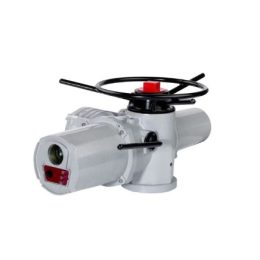Advantages and disadvantages of butterfly valves
Introduction
Butterfly valves are widely used in various industries due to their convenience and quickness in opening and closing, labor-saving, and low fluid resistance. They have a simple structure, small size, and are suitable for large diameter valves. However, like any other valve, there are advantages and disadvantages to using a butterfly valve. In this blog post, we will discuss both the advantages and disadvantages of butterfly valves.
Advantages of Butterfly Valve
One of the primary advantages of butterfly valves is that they are convenient and quick to open and close, making them labor-saving and suitable for frequent operation. They have a simple structure, small size, and short structure length, making them light in weight and suitable for large diameter valves. Butterfly valves also allow mud to be transported with the least accumulation of liquid at the pipe mouth. They have good sealing performance under low pressure and have good adjustment performance. When the valve seat channel is fully open, the effective flow area is larger, and the fluid resistance is smaller. The opening and closing moment is small, making them labor-saving. The sealing surface material is generally made of rubber, plastic, which provides good low-pressure sealing performance. Finally, butterfly valves are easy to install, and their operation is flexible and labor-saving, as manual, electric, pneumatic, and hydraulic modes can be selected.
Disadvantages of Butterfly Valve
One of the primary disadvantages of butterfly valves is that their working pressure and working temperature range are small. Butterfly valves have poor airtightness, which can lead to leakage in some applications.
Types of Butterfly Valves
Butterfly valves can be divided into offset plate type, vertical plate type, inclined plate type, and lever type according to their structure. According to the sealing form, they can be soft-sealed and hard-sealed. The soft-seal type generally uses a rubber ring seal, and the hard-seal type generally uses a metal ring seal. According to the connection type, butterfly valves can be divided into flange connection and wafer connection. Finally, according to the transmission mode, they can be divided into manual, gear transmission, pneumatic, hydraulic, and electric.
Conclusion
In conclusion, butterfly valves have many advantages, including their convenience, quickness, and labor-saving features. They are also easy to install and operate. However, they do have some disadvantages, including their limited working pressure and temperature range and poor airtightness. It is important to consider these factors when selecting a valve for your application.
- “Ensuring Industrial Safety and Performance with Actuator Valve Testing Methods”
- “Understanding Floating Ball Valves: Essential Components for Reliable Fluid Control in Hydraulic Systems”
- Wafer Check Valve
- Scotch Yoke Pneumatic Actuator
- Cast Floating Ball Valves: Everything You Need to Know
- Forged Floating Ball Valve



